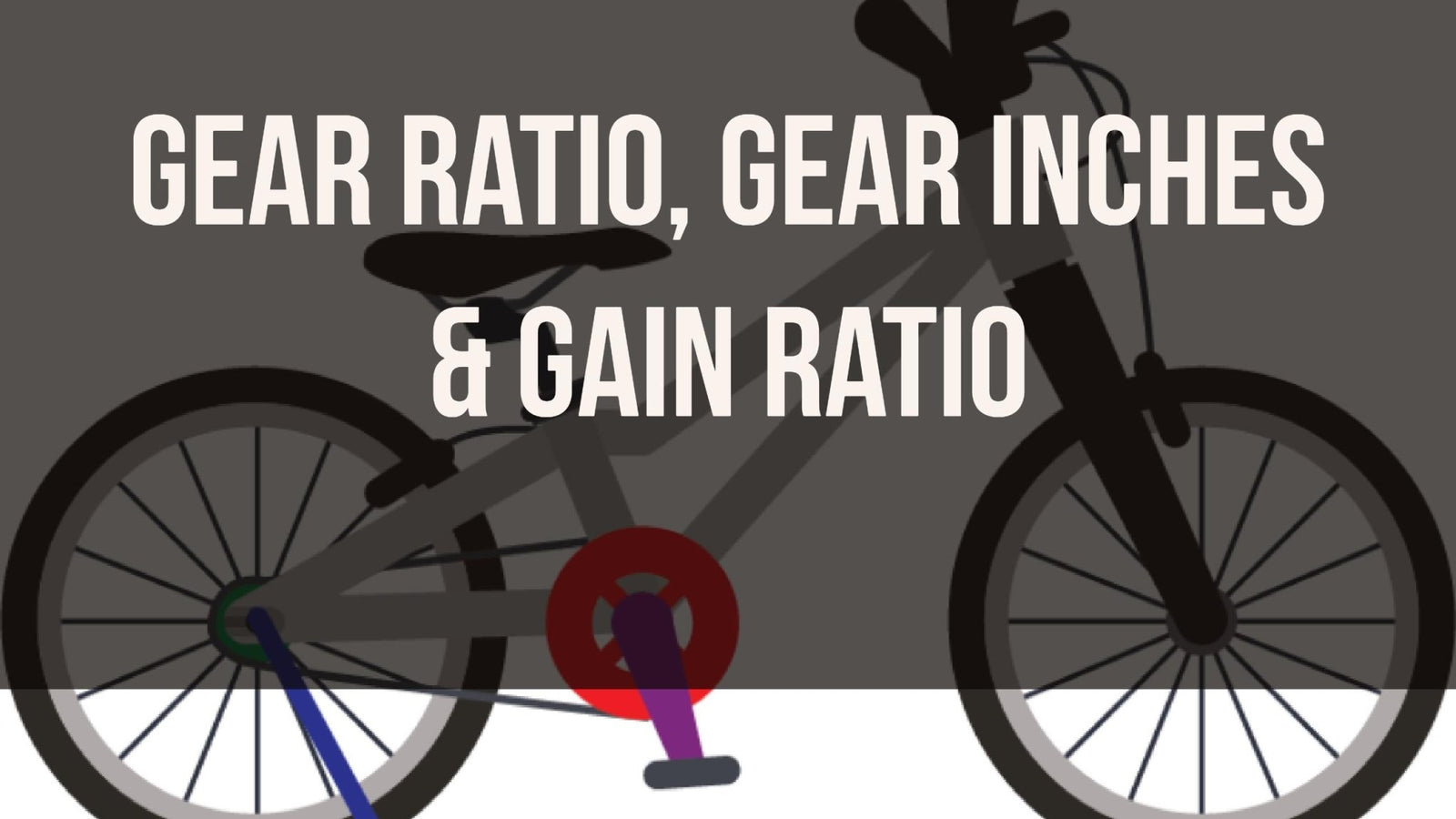Bicycle gearing is important. This is especially true for young riders with small legs. But there are a variety of ways to look at gearing and they all have different meanings. Let's break it down.
Gear Ratio
Gear ratio is simply the ratio of the chain ring size to the rear sprocket size.
Gear Ratio is the ratio of revolutions of the cranks to revolutions of the rear wheel.

Gear Inches
The problem with gear ratio is that it calculates the number of rotations of the rear wheel for every rotation of the crank, but it ignores the diameter of the rear wheel. If a bike with 20" wheels and a bike with 29" wheels both have the same gear ratio, the 29" bike will travel 45% farther with each revolution of the crank. Calculating Gear Inches takes wheel size into account.
Gear Inches is gear ratio times the diameter of the rear wheel.

Meters of Development
Meters of Development is often used in metric countries. Other than for obedience to convention, it need not be calculated in metric units. It is similar to Gear Inches, but it multiplies the diameter by π to calculate the actually distance traveled for each revolution of the crank.
Meters of Development is the distance traveled for each revolution of the crank.
Meters of Development = Diameter of the Rear Wheel x Number of Teeth in Chain Ring ÷ Number of Teeth in Rear Cog x π
Gain Ratio
The deficiency with Gear Inches is that it ignores the length of the crank. If we take two bicycles with identical Gear Inches and put a 100MM crank on one bike and a 200MM crank on the other bike, the rider on the bike with the 200MM crank will need to move the pedals a longer distance for each revolution of the rear wheel. Gain Ratio addresses this by adding crank length to the equation.
Gain Ratio is the ratio of (1) distance of pedal travel to (2) distance of bike travel.

Let's Look at some real life examples for Prevelo Bikes
| Single Speed | Multispeed | |||||||||||
|---|---|---|---|---|---|---|---|---|---|---|---|---|
| Tire Diameter (inches) | Tire Radius (inches) | Chain Ring (# of teeth) | Rear Cog (# of teeth) | Smallest Rear Cog (# of teeth) | Largest Rear Cog (# of teeth) | Crank Length (mm) | Crank Length (inches) | Gear Ratio | Gear Inches | Meters of Development (meters) | Gain Ratio | |
| Alpha One | 14 | 7 | 25 | 14 | 85 | 3.4 | 1.8 | 25.0 | 2.0 | 3.7 | ||
| Alpha Two | 16 | 8 | 25 | 14 | 95 | 3.7 | 1.8 | 28.6 | 2.3 | 3.8 | ||
| Alpha Three | 20 | 10 | 32 | 11 | 34 | 110 | 4.3 | 0.9 - 2.9 | 18.8 - 58.2 | 1.5 - 4.6 | 2.2 - 6.7 | |
| Alpha Four | 24 | 12 | 32 | 11 | 34 | 130 | 5.1 | 0.9 - 2.9 | 22.6 - 69.8 | 1.8 - 5.6 | 2.2 - 6.8 | |
| Zulu Three | 20 | 10 | 32 | 11 | 34 | 120 | 4.7 | 0.9 - 2.9 | 18.8 - 58.2 | 1.5 - 4.6 | 2.0 - 6.2 | |
| Zulu Four | 24 | 12 | 32 | 11 | 34 | 140 | 5.5 | 0.9 - 2.9 | 22.6 - 69.8 | 1.8 - 5.6 | 2.0 - 6.3 | |
Putting this into English
Let's translate what all of this really means using the Alpha One above.
Gear Ratio: The Alpha One has a Gear Ratio of 1.8. This means that for every 1 revolution of the crank, the rear wheel spins 1.8 revolutions.
Gain Ratio: The Alpha One has a Gain Ratio of 3.7. This means that for every 1 inches the pedal travels, the bicycle travels 3.7 inches.
Further reading: Gain Ratios - A New Way to Designate Bicycle Gears - Sheldonbrown.com
